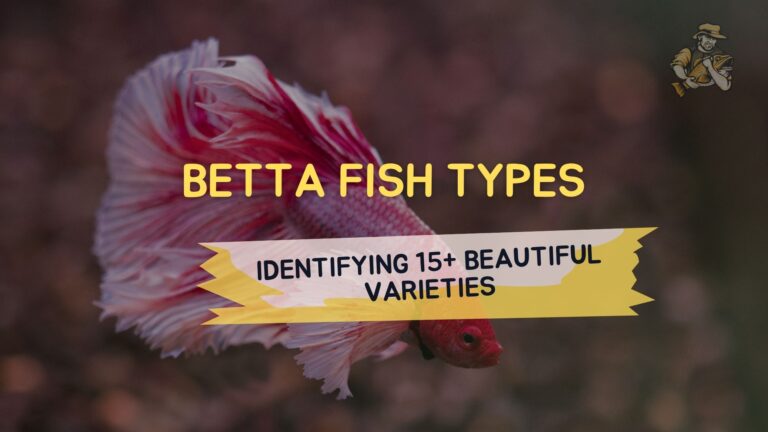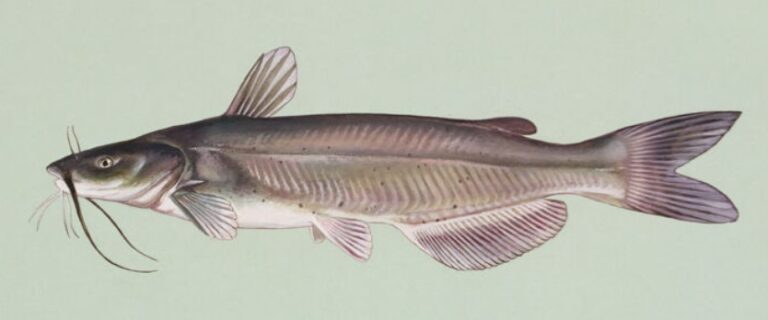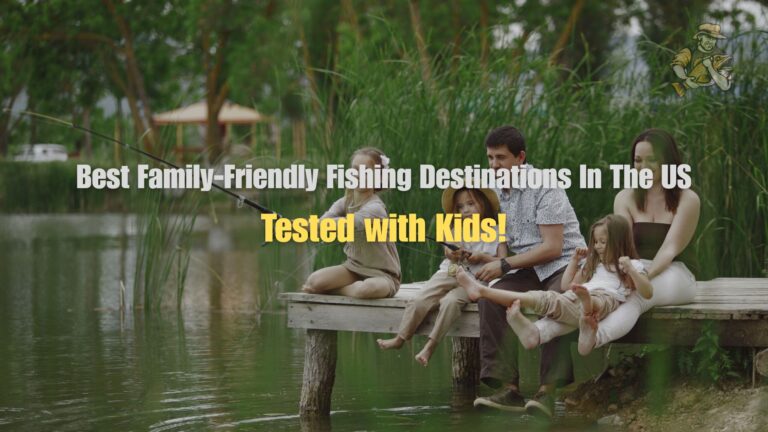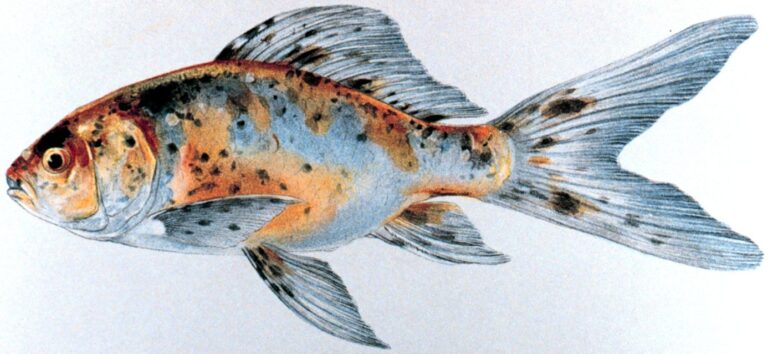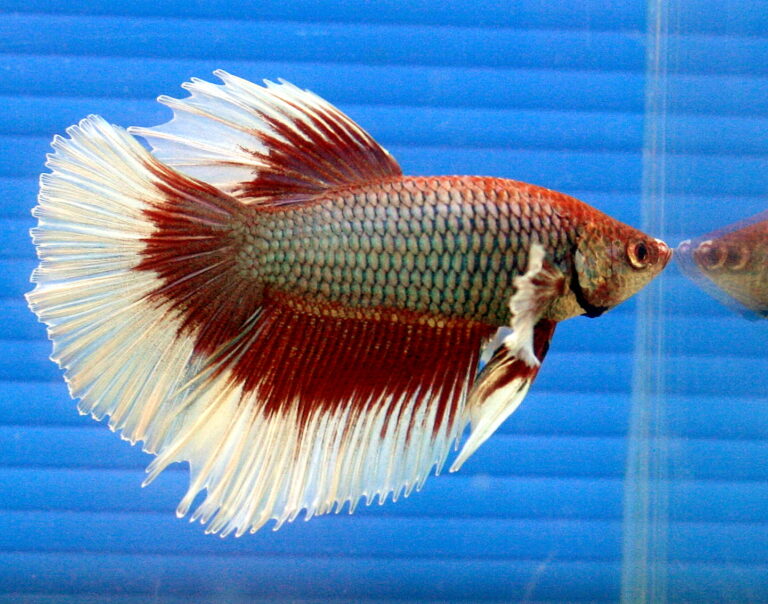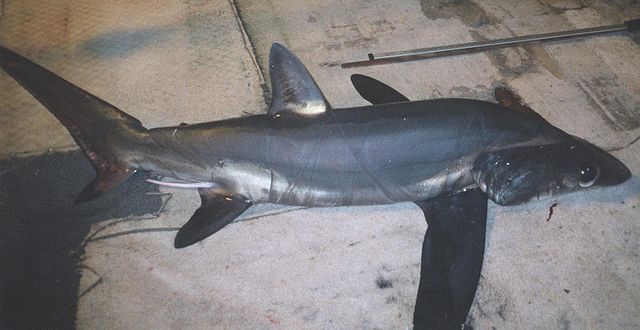Best Fishing Line for Bass in 2025: What Actually Works
By Adam Hawthorne | Last Modified: June 4, 2025
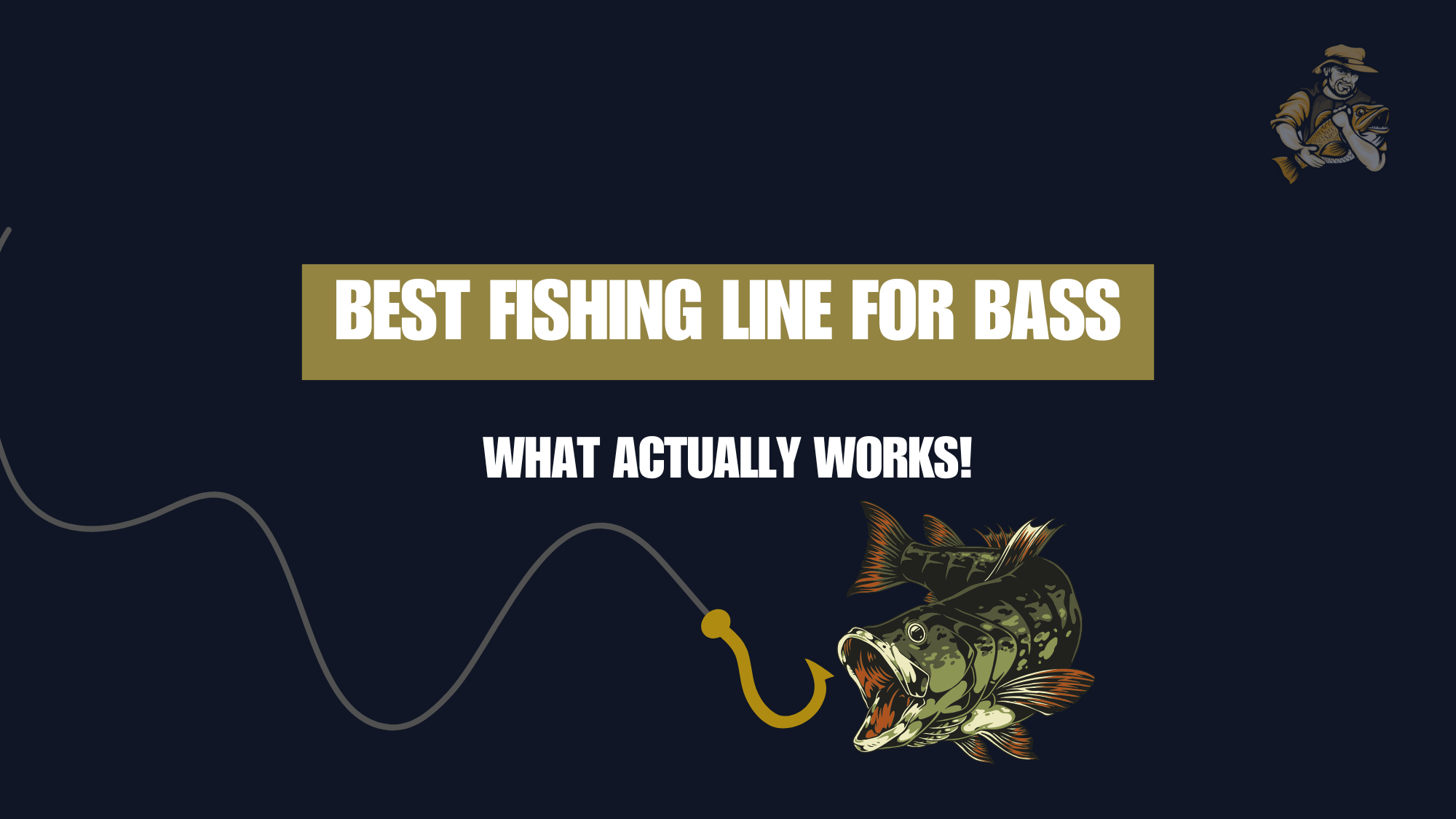
I still remember the day I lost that monster largemouth on Lake St. Clair back in 2019. The fish hit like a freight train, and my line snapped before I could even get a good hook set. I’d been using that same 12-pound mono for three seasons, and it had gotten brittle from UV exposure – something I knew better than to ignore. That 6+ pounder swimming away with my favorite Rapala still haunts me.
Fishing line is one of those things most anglers don’t think much about until it fails them. But after 30+ years of chasing bass across Michigan and beyond, I’ve learned it’s often the difference between a story about “the one that got away” and a trophy photo.
Let’s cut through the marketing hype and talk about what fishing lines actually work for bass in 2025, based on real experience rather than sponsored content.
Bass Fishing Line Basics (And Why It Matters)
Before diving into specific recommendations, we need to cover some fundamentals. There are three main types of fishing line for bass fishing, and each has its place depending on the situation:
- Monofilament: The traditional single-strand nylon line
- Fluorocarbon: Nearly invisible underwater with less stretch than mono
- Braided: Ultra-strong, no-stretch line made from woven fibers
When I first started bass fishing with my grandfather on the Au Sable River, monofilament was pretty much the only option. These days, most serious bass anglers (myself included) keep rods spooled with all three types.
What’s frustrating is how many beginning anglers get completely wrong advice about line selection. My neighbor Tommy spent an entire summer struggling with backlashes and wind knots because someone told him to put 50-pound braid on his new baitcaster – a recipe for disaster for someone still learning the reel.
Key Factors in Choosing Bass Fishing Line
The right line choice depends on several factors:
- Fishing technique: Are you flipping heavy cover, fishing topwater, or finesse fishing with light tackle?
- Water clarity: Clear water generally demands more invisible line
- Cover density: Thick vegetation and wood require stronger, more abrasion-resistant line
- Lure weight: Heavier lures need stronger line
- Personal preference: Some techniques just feel better with certain lines
I’ve spent countless hours experimenting with different lines for specific techniques. What works perfectly for punching through lily pads would be terrible for skipping jigs under docks. My buddy Dave swears by fluorocarbon for everything, but I find it too stiff for certain applications.
Best Monofilament Lines for Bass Fishing
Monofilament remains popular for bass fishing for good reason – it’s versatile, forgiving, and affordable. For topwater lures, walking baits, and moving presentations, mono’s controlled stretch provides a perfect buffer during the fight.
Berkley Trilene XL (Best All-Around Mono)
I’ve been using Berkley Trilene XL for at least 20 years now, and it remains my go-to monofilament for most bass fishing situations. The 10-12 pound test hits the sweet spot for general-purpose bass fishing.
Pros:
- Excellent knot strength
- Smooth casting
- Just the right amount of stretch
- Very consistent diameter
- Affordable price point
Cons:
- Not the most abrasion-resistant mono
- Can have memory issues in cold water
- UV degradation over time (replace seasonally)
My son started bass fishing with this line, and its forgiveness helped him avoid frustration while learning. For a beginner, I still recommend this line in 10-pound test on a spinning setup.
Last September, I was fishing a small local pond with a topwater frog on 12-pound Trilene XL. The stretch in the mono gave a 4-pound bass just enough fighting chance to make it exciting for my daughter Emma without risking losing the fish. That controlled flexibility is why it’s perfect for moving baits.
Sunline Super Natural (Best Premium Mono)
When I’m willing to spend a bit more, Sunline Super Natural is my choice. I discovered this line about 5 years ago from a Michigan bass guide on the Detroit River, and it’s worth every penny of its higher price.
Pros:
- Exceptional suppleness
- Minimal line memory
- Superior abrasion resistance
- Consistent performance in all temperatures
- Excellent for skipping baits under docks
Cons:
- Significantly more expensive than other monos
- Can be harder to find in stores
- Some colors fade quickly
I use 15-pound Super Natural for buzzbaits and other topwater presentations where I’m around boat docks or timber. The softness of this line makes it cast like a dream, even in cold conditions when most mono lines get stiff and springy.
I had a heated debate with my fishing buddy Mike about this line at our local tackle shop in Traverse City. He thinks it’s overpriced, but after he borrowed one of my rods rigged with it for a day on Grand Traverse Bay, he bought two spools the next week. The castability difference is that noticeable.
P-Line CXX (Best Abrasion-Resistant Mono)
For fishing around riprap, docks, or other abrasive cover, P-Line CXX has saved me countless lures. This stuff is significantly tougher than most monofilaments.
Pros:
- Exceptional abrasion resistance
- Good knot strength
- Copolymer construction blends best properties of different nylons
- Works well in a variety of temperatures
- Reasonably priced for its performance
Cons:
- More line memory than softer monos
- Not as supple as Trilene XL or Sunline
- Limited color options
During a tournament on Lake St. Clair a couple years back, we were fishing riprap banks with crankbaits, and I was the only one in the boat not losing lures. My P-Line CXX in 12-pound test was taking abuse that was shredding my partner’s fluorocarbon. For rocky areas, this has become my confidence line.
Best Fluorocarbon Lines for Bass Fishing
Fluorocarbon has become incredibly popular for bass fishing due to its virtual invisibility underwater and sensitivity. I use it primarily for techniques where I need improved feel, like fishing jigs, soft plastics, or crankbaits.
Seaguar InvizX (Best All-Around Fluoro)
After trying nearly every fluorocarbon on the market, Seaguar InvizX is what I keep coming back to for most applications. The balance of suppleness, strength, and manageability makes it ideal for bass fishing.
Pros:
- More supple than most fluorocarbons
- Excellent invisibility underwater
- Good abrasion resistance
- Manageable memory
- Great sensitivity
Cons:
- Not the strongest fluoro pound-for-pound
- More expensive than mono
- Can be challenging for beginners to manage
I’ve been using 15-pound InvizX for pitching jigs around Lake Michigan boat docks for the past three seasons, and it’s the perfect balance of stealth and strength. The lower visibility definitely gets me more bites in the clear water, but it’s still tough enough to handle the occasional pike that decides to inhale my jig.
Sunline Shooter (Best Finesse Fluorocarbon)
For drop shots, Ned rigs, tubes, and other finesse presentations, Sunline Shooter is worth the premium price. This is the line I reach for when bass get picky in clear water conditions.
Pros:
- Exceptional suppleness for fluorocarbon
- Amazing sensitivity
- Very consistent diameter
- Virtually invisible underwater
- Superior knot strength
Cons:
- Very expensive (nearly twice the price of standard fluoros)
- Limited availability (mostly online or specialty shops)
- Smaller spool sizes than competitors
I discovered this line after getting thoroughly outfished by a tournament partner on an unusually clear day on Lake Huron. He was using 8-pound Shooter for drop shotting smallmouth, and I couldn’t buy a bite on my standard fluoro. After switching, the difference was immediate – I could feel the subtle takes that I was missing before.
A word of caution though – I ordered some “Sunline Shooter” from a sketchy online marketplace last year, and I’m nearly certain it was counterfeit. The line diameter was inconsistent and it broke far too easily.
Seaguar AbrazX (Best Heavy Cover Fluoro)
When I’m flipping heavy cover or fishing around laydowns and brush piles, Seaguar AbrazX is my confidence line. The abrasion resistance is noticeably better than other fluorocarbons I’ve used.
Pros:
- Superior abrasion resistance
- Good knot strength
- Maintains properties when nicked or scratched
- Excellent for pitching and flipping
- Lower stretch than many fluoros
Cons:
- Stiffer than other fluorocarbons
- Higher memory can cause casting issues
- Premium price point
During a fishing trip to Lake Erie with my brother James, we were flipping heavy wood cover for largemouth. He was breaking off regularly with his standard fluorocarbon, while my 20-pound AbrazX was holding up to the punishment. By mid-morning, he had switched to borrowing my spool after losing three jigs in an hour.
For heavy cover situations where you still want the properties of fluorocarbon, this is the line to beat. I won’t use anything else when I’m punching matted vegetation or working thick brush piles.
Best Braided Lines for Bass Fishing
Braided line has revolutionized certain bass fishing techniques. The lack of stretch, incredible strength-to-diameter ratio, and durability make it perfect for specific applications.
Power Pro Super Slick V2 (Best All-Around Braid)
After trying most braids on the market, Power Pro Super Slick V2 has become my standard for most applications. The updated version casts noticeably better than the original.
Pros:
- Exceptional casting distance
- Smooth through guides
- Good abrasion resistance
- Holds color well
- Reasonable price for premium braid
Cons:
- Not as thin as some Japanese braids
- Can dig into itself on the spool under heavy pressure
- Occasional quality control issues
I use 30-pound Super Slick for my frog rod, and 20-pound for general topwater duty. The casting performance is noticeably better than standard Power Pro, especially when making long casts with lighter lures.
On a windy day at Saginaw Bay last summer, I was able to cast significantly further than my buddy using standard braid. Those extra 10-15 feet made all the difference when the smallmouth were holding on an offshore shoal that was just at the edge of casting range.
Sufix 832 (Most Durable Braid)
For situations where I’m dealing with repetitive casts in harsh conditions, Sufix 832 has proven itself as the most durable braid I’ve used. This is my go-to for heavy cover and vegetation.
Pros:
- Exceptional durability
- Maintains round shape over time
- Good casting properties
- Resists color fading better than most
- Great for punching vegetation
Cons:
- Not as smooth as some newer braids
- Slightly more expensive than basic braids
- Limited color selection
I’ve been using 50-pound Sufix 832 for punching lily pads on my local lakes for several seasons. What impressed me is how it maintains its integrity even after a full season of use. Other braids I’ve used start to fuzz and fray after heavy use, but the Sufix holds up remarkably well.
When I was fishing Houghton Lake last July, I was using the same spool of 832 I’d been fishing with for nearly 14 months, and it was still performing like new. That longevity makes it worth the extra cost for me.
J-Braid Grand (Best Value Braid)
Not everyone wants to spend premium prices on braided line. J-Braid Grand offers 90% of the performance of high-end braids at about 70% of the price.
Pros:
- Excellent value
- Very smooth casting
- Good knot strength
- Maintains roundness
- Available in large bulk spools
Cons:
- Colors fade faster than premium brands
- Slightly louder through guides
- Less abrasion resistant than top-tier braids
I stumbled across this line at my local bait shop when they were out of my usual brand. The owner recommended it as a good value alternative, and I’ve been pleasantly surprised. For the money, it performs remarkably well.
I use 40-pound J-Braid for my chatterbait and spinnerbait setups, where I’m less concerned about ultimate stealth or durability. It casts well, handles fish effectively, and costs significantly less than the premium options.
My brother-in-law, who’s just getting into bass fishing, has spooled all his reels with this line. On our family fishing trip to Lake Superior last summer, it performed admirably even when he wasn’t exactly gentle with his equipment.
Specialized Line Applications for Bass Fishing
Beyond the general recommendations, certain bass fishing techniques call for specific line choices. Let’s break down some common scenarios:
Best Line for Topwater Bass Fishing
For walking baits, poppers, and traditional topwater lures, I typically use:
- 12-15 pound monofilament (preferably Sunline Super Natural)
- 30-40 pound braided line (Power Pro Super Slick V2)
Monofilament floats naturally, which helps with topwater presentations, and the stretch provides a buffer when fish strike violently. Braid, on the other hand, offers better hooksets and the ability to launch lures further.
For frogs and other heavy cover topwater lures, I exclusively use 50-65 pound braided line. The zero-stretch helps drive hooks home through thick cover, and the cutting resistance prevents break-offs in lily pads and vegetation.
Last August, I was fishing a local pond with heavy lily pad cover, using a black SPRO frog on 65-pound Power Pro. When a 5-pound largemouth engulfed the frog and dove straight into the thickest part of the pads, that heavy braid allowed me to literally horse the fish through the vegetation without hesitation. With any other line, that fish would have been long gone.
Best Line for Crankbaits and Moving Baits
For crankbaits, I’ve found the sweet spot to be:
- 10-12 pound fluorocarbon (Seaguar InvizX) for most scenarios
- 14-17 pound fluorocarbon (Seaguar AbrazX) for squarebills around cover
The slight stretch of fluorocarbon acts as a shock absorber to keep fish buttoned during the fight, while its sinking property helps get crankbaits deeper. The invisibility is also a bonus in clear water.
I had an interesting experience on the Detroit River two springs ago when I was throwing lipless cranks on two identical rods – one with fluoro, one with mono. The fluorocarbon rod consistently outproduced the mono setup by a margin of about 3:1. The extra depth and invisibility made a significant difference in that clear water situation.
Best Line for Jigs and Texas Rigs
When fishing jigs, Texas rigs, and other bottom-contact presentations, my preferences are:
- 15-20 pound fluorocarbon (Seaguar AbrazX) for general use
- 40-65 pound braid with a fluorocarbon leader for heavy cover
The sensitivity of fluorocarbon helps detect subtle bites, while its abrasion resistance holds up well against rocks and wood. In the thickest cover, braid with a leader gives you the best of both worlds.
During a club tournament on Lake St. Clair, I was flipping a 3/4 oz jig to isolated pieces of wood with 20-pound AbrazX. I could feel every detail of the bottom composition and detect even the lightest “tick” when a smallmouth would inhale the jig on the fall. That sensitivity directly translated to more fish in the boat.
Best Line for Finesse Bass Fishing
For drop shots, Ned rigs, and other finesse techniques:
- 6-10 pound fluorocarbon (Sunline Shooter) for ultimate sensitivity
- 10-15 pound braid to 6-8 pound fluorocarbon leader for deeper presentations
Finesse techniques demand thinner, less visible line, and fluorocarbon excels here. When fishing deeper than 20 feet, I prefer the braid-to-leader combo for better feel and hook-setting power.
I learned this lesson the hard way on Lake Michigan last summer. I was drop-shotting for smallmouth in 35 feet of water with straight fluorocarbon, and I was missing fish because I couldn’t get a good hookset at that depth. After switching to 10-pound braid with an 8-pound fluoro leader, my hookup ratio nearly doubled.
Regional Considerations for Bass Line Selection
What works in one part of the country might not be ideal in another. Here in Michigan, we have some specific considerations:
Great Lakes Region Line Choices
In our typically clear Great Lakes waters, I’ve found fluorocarbon to be essential for many applications. The water clarity in Lake Michigan and parts of Lake Huron can be exceptional, making line visibility a major factor.
For smallmouth fishing in the Great Lakes, I rarely go heavier than 12-pound fluorocarbon, even when fishing around structures like breakwalls and harbor rocks. The fish are line-shy enough that the decreased visibility outweighs the benefit of heavier line.
Our extreme seasonal temperature changes also impact line choice. I tend to use more braided line with fluorocarbon leaders in early spring and late fall, as the cold water makes straight fluorocarbon much stiffer and harder to manage.
During a November smallmouth trip on Grand Traverse Bay two seasons ago, the water temperature had dropped to 41 degrees. My fluorocarbon was so stiff it was nearly unfishable, while my braid-to-fluoro setup performed perfectly. That experience changed my approach to cold-water line selection permanently.
Southern Reservoir Adapations
When I travel to fish southern impoundments, I adjust my line choices significantly. The stained water and heavy cover common in many southern lakes means I can get away with heavier line without spooking fish.
On a trip to Kentucky Lake, I was using 20-pound fluorocarbon for casting jigs to brush piles – something I’d never do in our clear northern waters. The fish didn’t seem to mind the heavier line at all, and the additional strength was necessary for extracting bass from the thick cover.
Common Line Selection Mistakes to Avoid
Through decades of fishing and talking with countless anglers, I’ve witnessed the same mistakes repeated over and over:
Underrating Line for the Cover
I see this constantly, especially with newer anglers. They’ll be pitching jigs into thick brush piles with 10-pound test, then act surprised when they break off fish after fish.
My friend Dave learned this expensive lesson on the Au Sable River last summer. He was using 8-pound test around fallen timber and lost six straight bass when they dove into the wood. After switching to 15-pound fluorocarbon, he landed the next four fish without issue.
Match your line to the cover you’re fishing, not just the size of fish you expect. Even smaller bass can break lighter line when they have leverage from heavy cover.
Over-Spooling with Heavy Line
The opposite problem is just as common – using excessively heavy line when it’s not needed. This hurts casting distance, reduces lure action, and can decrease your bite rate significantly.
I watched a frustrated angler at Houghton Lake last year struggling to get bites on a finesse jig. He was using 20-pound fluoro in gin-clear water, while everyone else was catching fish on 8-10 pound test. When he finally borrowed one of my rods with 8-pound Sunline, he immediately started catching fish.
Neglecting Line Maintenance
This might be the most common mistake of all. Line doesn’t last forever, especially monofilament and fluorocarbon, which degrade from UV exposure and use.
I replace my monofilament and fluorocarbon at least twice a season (more for heavily used setups), and I inspect the first few feet before every fishing trip. For braid, I’ll cut off the first 20-30 feet if I notice any fraying or wear, though quality braid can last multiple seasons with proper care.
My neighbor Mike learned this the hard way during a buddy tournament on Lake Erie. His fluorocarbon was over a year old, and he lost two key fish when his line snapped on the hookset. Those fish would have put them in the money, but old line cost them the tournament.
Using the Wrong Line Type for the Technique
I see anglers trying to force one type of line to work for all techniques, usually because they don’t want to respool or carry multiple rods.
Fluorocarbon is terrible for topwater. Braid is often too visible for finesse techniques in clear water. Monofilament lacks the sensitivity for detecting light bites on bottom-contact baits. Using the right line for each technique makes a massive difference.
Last summer, my brother-in-law couldn’t figure out why his topwater frog was constantly sinking. Turns out he had spooled up with fluorocarbon instead of braid or mono. The sinking property that makes fluoro great for crankbaits makes it awful for topwater lures.
Fishing Line Care and Maintenance
Proper care can extend the life of your fishing line significantly and prevent heartbreaking failures at the worst possible moment.
Storage Considerations
I store my rods horizontally or with the tip up to prevent line from developing memory. For reels that won’t be used for months (like during our Michigan winters), I back off the drag to reduce tension on the line.
UV exposure is particularly harmful to monofilament and fluorocarbon. I learned to keep my rods out of direct sunlight when not in use, especially in the boat. A cheap rod cover or even a towel draped over your rods can add months to your line’s lifespan.
When to Replace Your Line
Here’s my general timeline for line replacement:
- Monofilament: Every 3-4 months during heavy use seasons
- Fluorocarbon: Every 4-6 months on regularly used setups
- Braided Line: When visible fraying occurs or annually for heavily used setups
For my tournament rods or when targeting trophy fish, I replace line much more frequently – sometimes before every major tournament. The cost of new line is negligible compared to losing the fish of a lifetime.
Last year before a club championship on Lake St. Clair, I respooled all eight of my primary rods despite the line looking “okay.” During the tournament, I landed a 6.4-pound smallmouth that won big bass and ultimately the tournament by less than half a pound. That fish fought hard around a dock piling, and I’m convinced fresh line made the difference.
FAQ About Bass Fishing Line
What pound test should I use for bass fishing?
For general bass fishing in average conditions, 12-15 pound test is the sweet spot for most applications. However, this varies widely by technique:
- Finesse techniques: 6-10 pound fluorocarbon
- General purpose: 10-15 pound mono or fluoro
- Heavy cover: 15-25 pound fluorocarbon or 30-65 pound braid
- Topwater: 12-15 pound mono or 30-50 pound braid
I’ve found that many anglers, especially beginners, tend to oversize their line. Unless you’re fishing extremely heavy cover, most bass techniques are better served with lighter line that allows for better lure action and more bites.
Is braided line good for bass fishing?
Braided line excels for specific bass fishing applications but isn’t ideal for everything. I use braid for:
- Topwater lures, especially frogs
- Heavy cover situations (flipping, pitching)
- Deep water applications with a fluorocarbon leader
- Situations requiring long casts
Braid’s lack of stretch provides superior hooksets, and its thin diameter allows for longer casts. However, its visibility underwater can be a drawback in clear water, which is why I often use a fluorocarbon leader with it. For general-purpose bass fishing in clear water, straight fluorocarbon or monofilament often outperforms braid.
What color fishing line is best for bass?
Line color selection should be based primarily on water clarity and fishing conditions:
- Clear water: Green, clear, or blue fluorocarbon is my preference
- Stained water: Green or brown works well
- Murky water: High-visibility colors like yellow can help with strike detection
- Topwater (with braid): Dark colors (green, black, blue) reduce visibility from above
During a clear water tournament on Lake Huron, I conducted an experiment with two identical drop shot rigs – one with clear fluorocarbon, one with blue. The clear line outproduced the blue by a significant margin that day, reinforcing how line-shy bass can be in ultra-clear conditions.
How often should I change my bass fishing line?
This depends on usage and line type, but here’s my general recommendation:
- Heavy tournament use: Every 1-2 months
- Regular weekend fishing: Every 3-4 months for mono/fluoro, annually for braid
- Occasional use: At least annually, regardless of type
I inspect my line constantly while fishing. If I notice any fraying, nicks, or abnormal memory/coiling, I replace it immediately. The few dollars saved by stretching the life of fishing line isn’t worth losing a trophy bass.
Is fluorocarbon worth the extra cost for bass fishing?
For many bass fishing applications, absolutely. I’ve experienced enough situations where fluorocarbon directly resulted in more bites and landed fish to justify its higher price for applications where it excels.
However, I don’t use fluoro for everything. Monofilament still has advantages for topwater and moving baits, and braid excels for heavy cover and vegetation. Use fluorocarbon where its properties (invisibility, sensitivity, and sinking nature) provide a tangible advantage.
Final Thoughts on Choosing Bass Fishing Line
After decades of fishing for bass across countless lakes and rivers, I’ve come to realize that line selection is far more important than many anglers give it credit for. I’ve had days where changing nothing but line type or pound test made the difference between struggling and limiting out.
Don’t fall into the trap of looking for the one “perfect” line that does everything. That unicorn doesn’t exist. Instead, match your line to the technique, conditions, and cover you’re fishing. Be willing to switch rods or respool when situations demand it.
For beginners, I recommend starting with a quality 12-pound monofilament like Berkley Trilene XL for an all-purpose setup. As you grow as an angler, add setups with fluorocarbon and braided line to your arsenal.
Remember that the “best” fishing line is ultimately the one that gives you confidence. I know anglers who catch tons of bass on line choices I wouldn’t personally make, simply because they have confidence in their setup and fish it effectively.
Fishing line is your only direct connection to the fish. Don’t skimp on quality or maintenance, and don’t hesitate to replace it at the first sign of wear. That monster bass you’ve been chasing for years might be the next one to bite, and the last thing you want is to lose it to something as preventable as line failure.

Meet Adam Hawthorne
I’m a lifelong fishing enthusiast who’s spent years exploring rivers, lakes, and oceans with a rod in hand. At Fishing Titan, I share hands-on tips, honest gear reviews, and everything I’ve learned about fish and ocean life, so you can fish smarter and enjoy every cast.
Share:

Meet Adam Hawthorne
I’m a lifelong fishing enthusiast who’s spent years exploring rivers, lakes, and oceans with a rod in hand. At Fishing Titan, I share hands-on tips, honest gear reviews, and everything I’ve learned about fish and ocean life, so you can fish smarter and enjoy every cast.
Related Articles
-
Betta Fish Types: Identifying 15+ Beautiful Varieties
Walking into a pet store’s fish section always gives me that same feeling of wonder, especially when I reach the betta display. Those vibrant colors…
-
Channel Catfish
The Channel Catfish stands as one of North America’s most recognizable and economically important freshwater fish species. Known scientifically as *Ictalurus punctatus*, this robust member…
-
7 Best Family-Friendly Fishing Destinations in the U.S. (Tested with Kids!)
I still remember the first time I took my son Tommy fishing. He was five, armed with a Spider-Man rod that was more toy than…
-
Texas Saltwater Fishing: Essential Tips From Adam
It was June 2010, and man was I cocky heading into that first Texas saltwater trip. Drove down from Michigan in my F-150 with a…
Fish Species
-
Shubunkin Goldfish
The Shubunkin Goldfish (Carassius auratus) represents one of the most popular and visually striking varieties of goldfish kept in aquariums and outdoor ponds worldwide. Originally…
-
Half Moon Betta
The Half Moon Betta (Betta splendens) represents one of the most distinctive and sought-after varieties within the Siamese fighting fish lineage. Distinguished by its semicircular…
-
Stonecat
The Stonecat (Noturus flavus) represents one of North America’s most distinctive freshwater catfish species, serving as a crucial indicator of stream health and ecosystem balance….
-
Bigeye Thresher Shark
The Bigeye Thresher Shark represents one of the ocean’s most extraordinary predators, distinguished by its dramatically elongated tail fin that can extend up to half…

